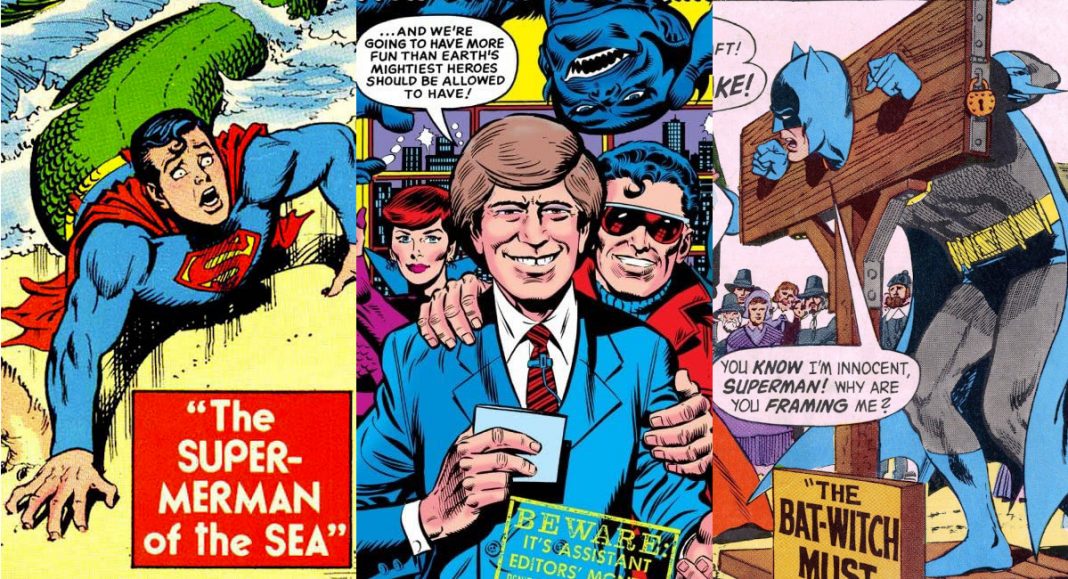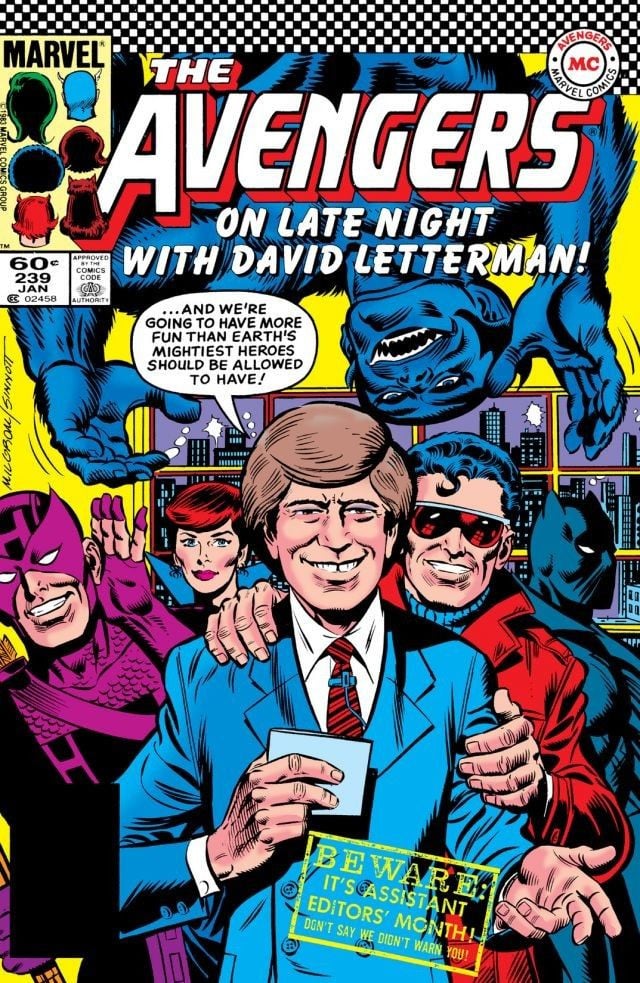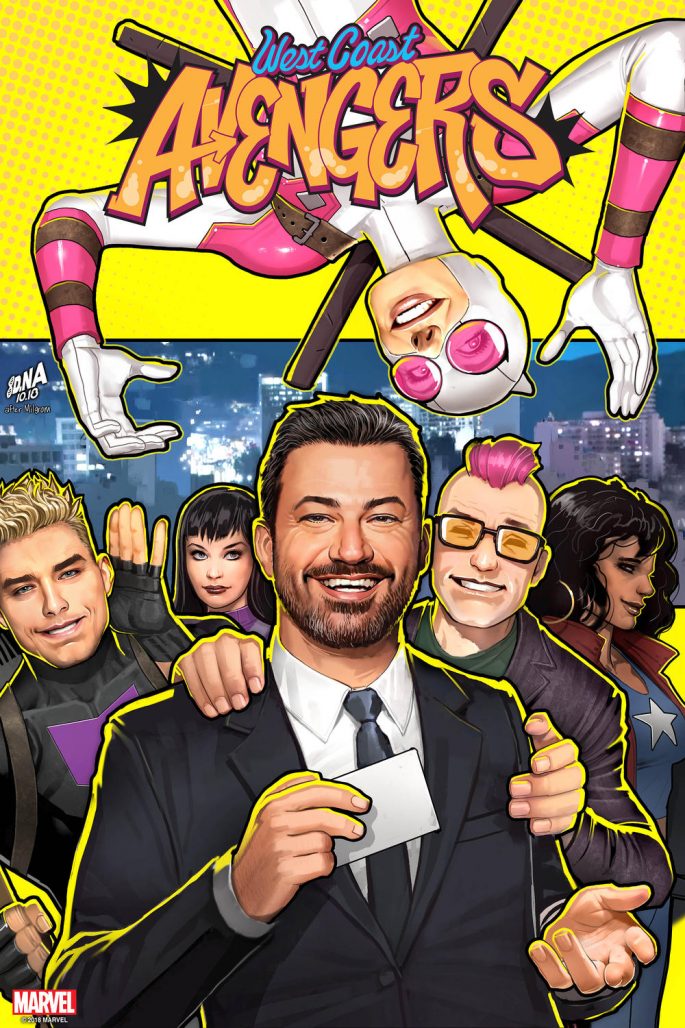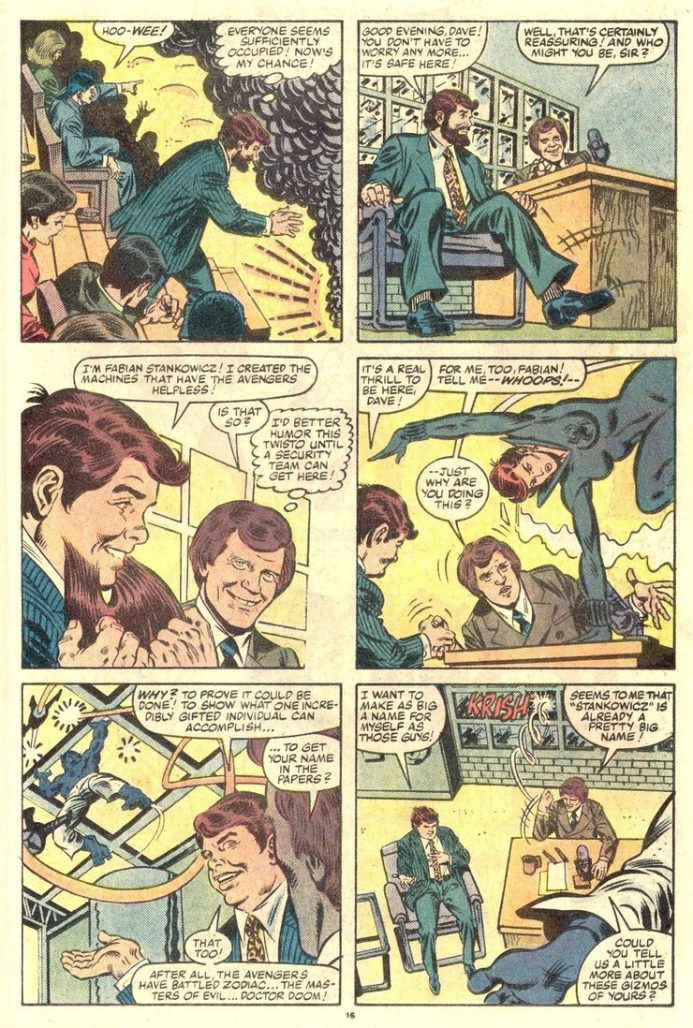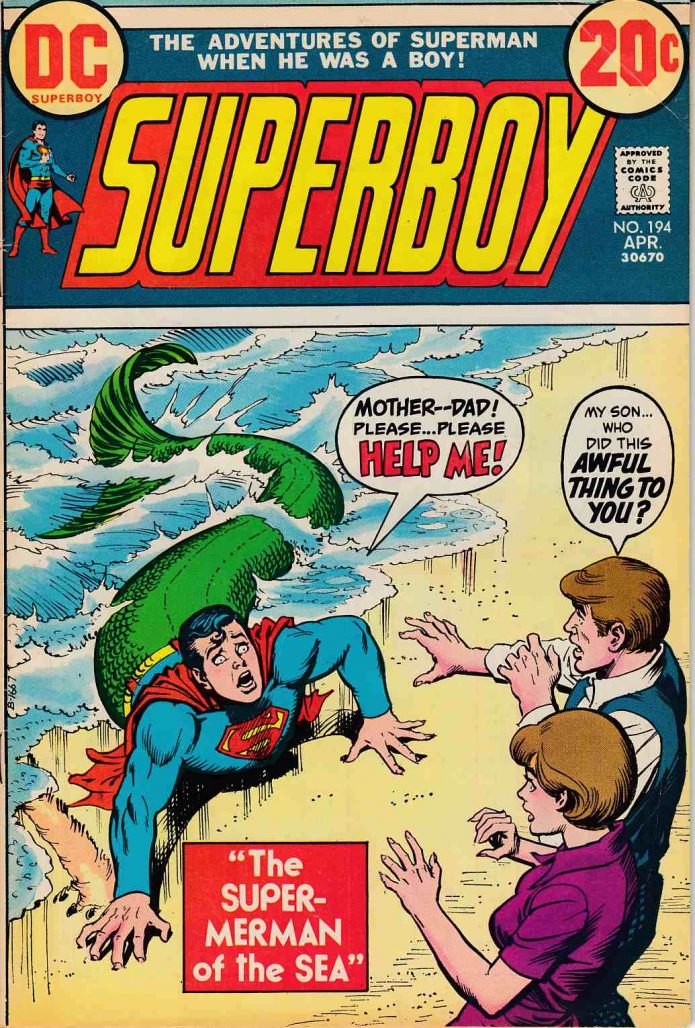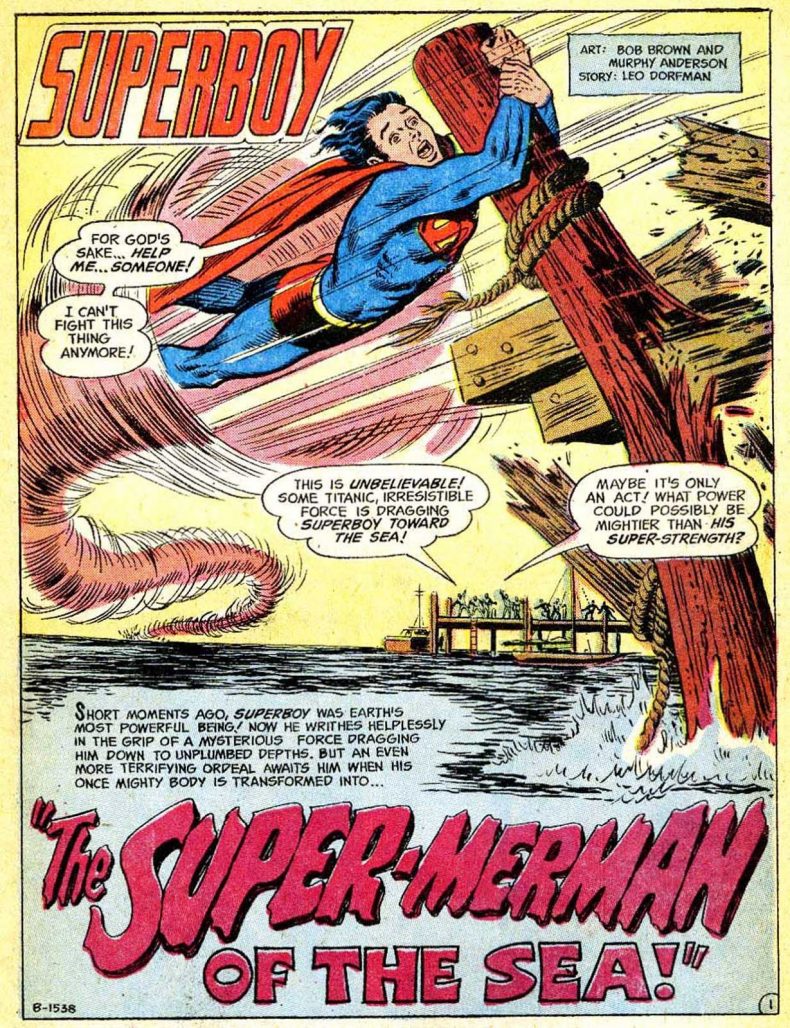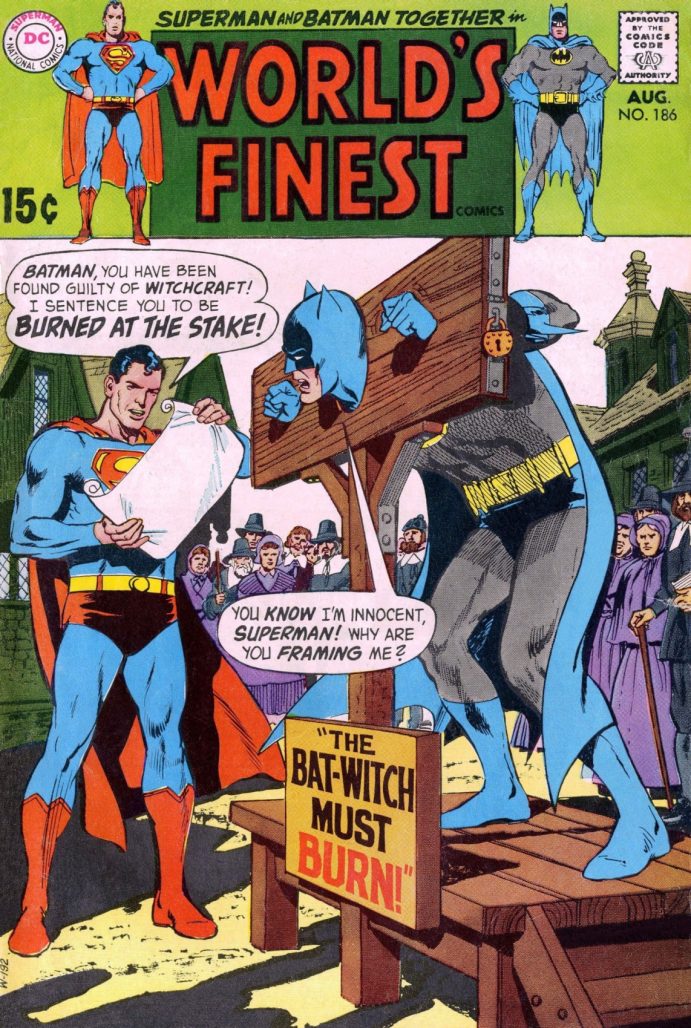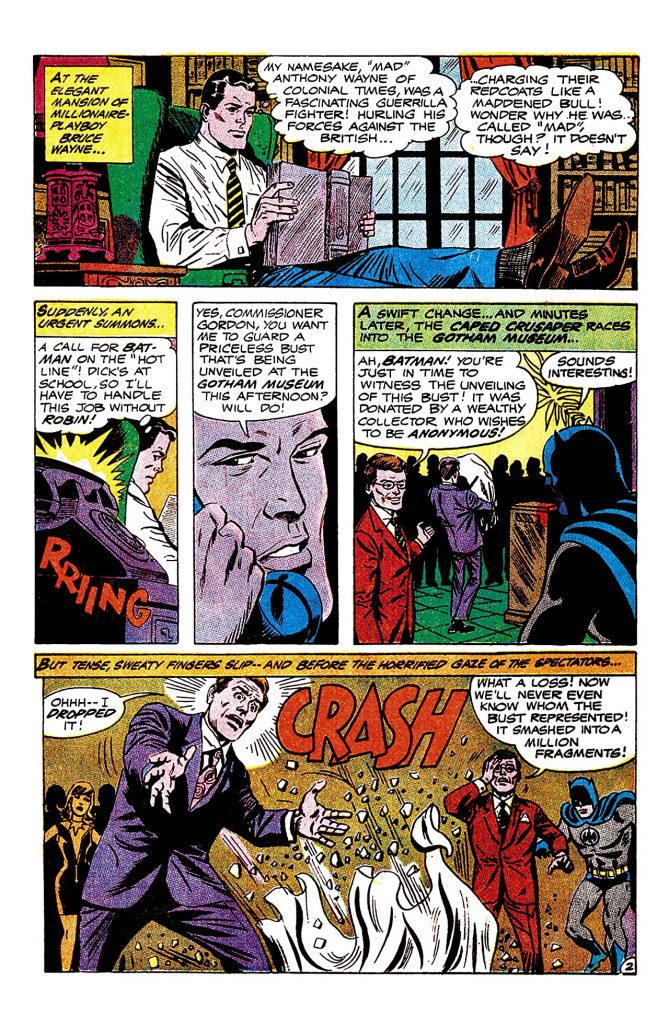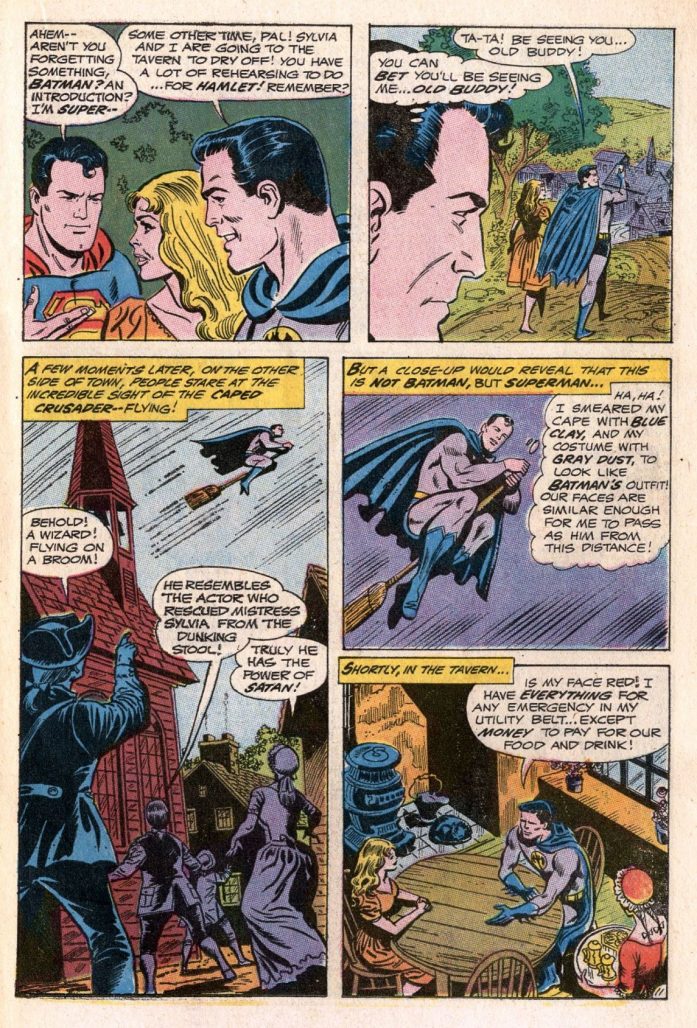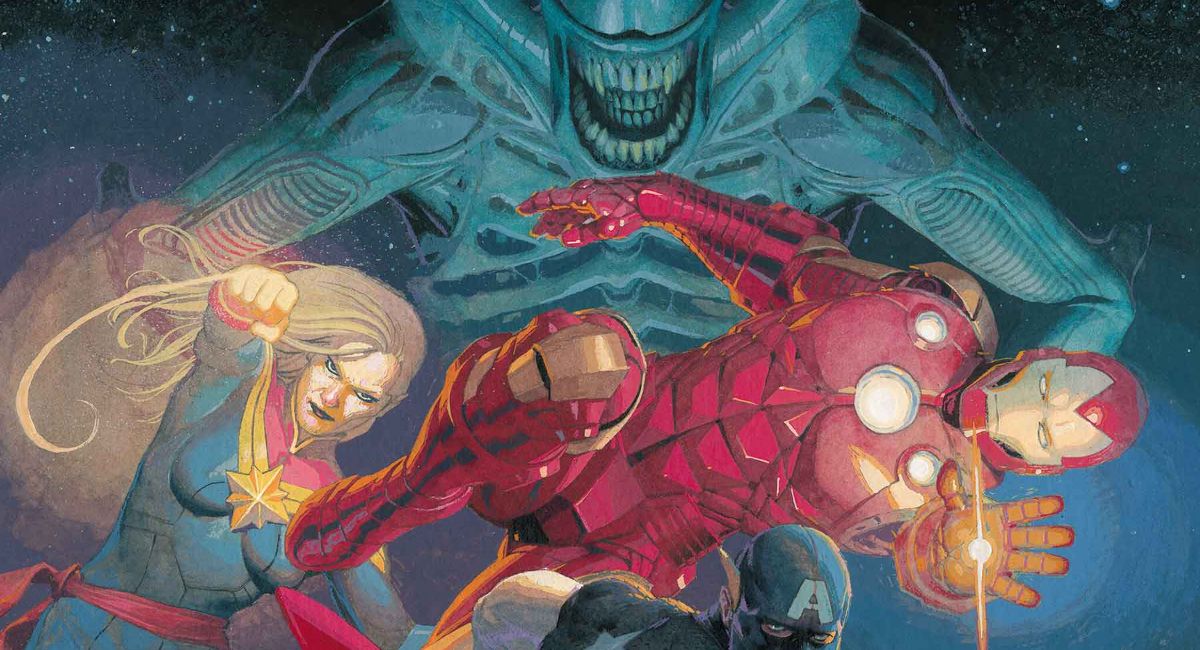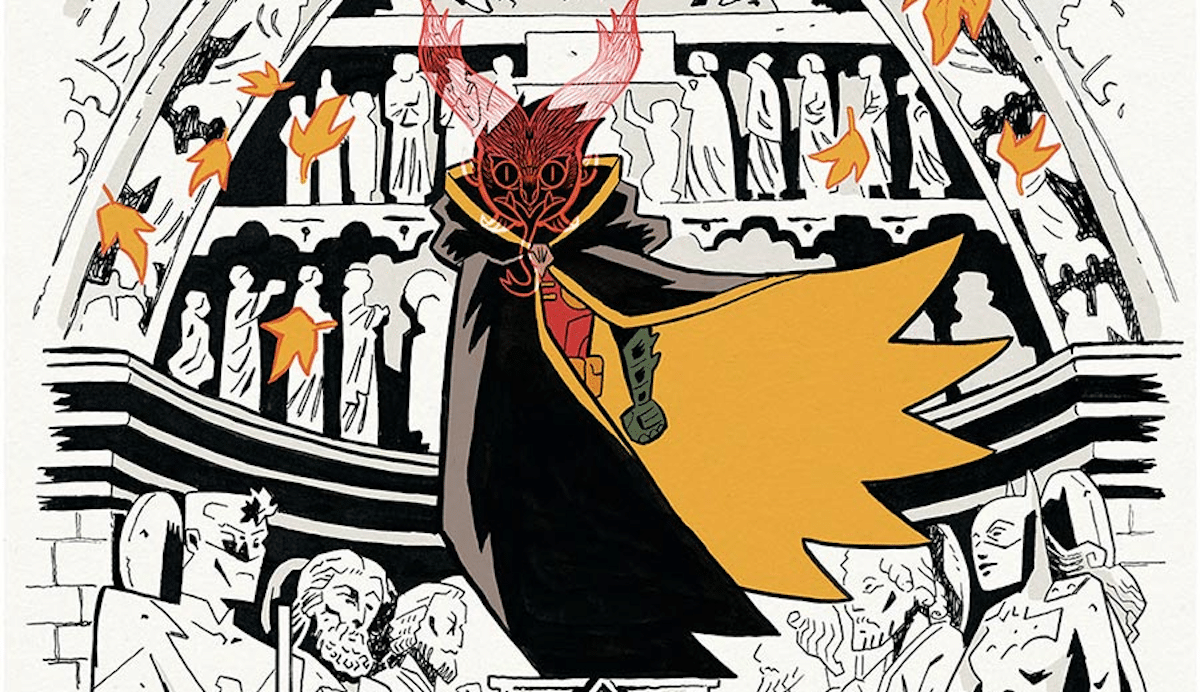The Beat’s Gregory Paul Silber has been accused of having a bit of an… obsessive personality. Each week in Silber Linings, he takes a humorous look at the weirdest, funniest, and most obscure bits of comics and pop culture that he can’t get out of his head.
My little sister, Jenny, is not a comic book reader. Not the way I am, at least. She’s read a handful of graphic novels like Bone and Laura Dean Keeps Breaking Up With Me, and went through an Archie stage in middle school, but comics aren’t an everyday, or even every month, thing for her like they are for me. She hadn’t heard of Onomatopoeia before I wrote about him, nor was she familiar with Helena Wayne’s controversial sartorial choices, and that’s perfectly alright.
But she knows me, and knows what kind of weirdness I enjoy. So when she sent me a trio of weird comics as a birthday gift, I had a feeling I would enjoy them. Sure, my birthday already happened two weeks ago, but I saw my shadow when I woke up that morning, which means I’m entitled to six more weeks of birthday content. I already celebrated then with five weird comics that I stumbled upon in the Anyone Comics’ dollar bins. The results were mixed, to say the least, but maybe the problem was that my methods were too random.
All three of the comics I’m talking about today were chosen based on the strength of their wacky covers alone, and while you can’t judge a book by its cover, sometimes you can tell if it’s about teenage Clark Kent turning into a merman.
The Avengers #239
Writer: Roger Stern
Artists: Al Milgrom & Joe Sinnott
Colorist: Christie Scheele
Letterer: J. Novak
Cover Artists: Al Milgron & Joe Sinnott
I never read it before today, but I saw this cover by Al Milgrom and Joe Sinnott in 2018 when David Nakayama paid tribute to it with his West Coast Avengers #4 cover featuring the titular team meeting Jimmy Kimmel. I don’t think Kimmel was featured in more than one page within the story itself, but that whole Kelly Thompson/Stefano Casselli WCA run is woefully under-appreciated and ended way too soon, so read it regardless. Either way, that wasn’t Hawkeye’s first time on a late night talk show — at least not for original Hawkeye Clint Barton.
I’m not a huge David Letterman fan, but he’s kind of the perfect celebrity cameo for a Marvel comic, right? Especially for 1984 when this “Assistant Editor’s Month” story was published (Marvel used to have this tradition of publishing odd, usually humorous issues that they could playfully “blame” on the assistant editors). Letterman is nerdy, sure, but in a hip, knowing way similar to the branding Marvel’s tried to have since the Stan Lee days of the 1960s.
So I was disappointed to find that David Letterman himself doesn’t say anything particularly funny in this comic. Which isn’t to say it’s not an entertaining read, as Hawkeye, Mockingbird, Black Widow, Wonder Man (hoping his Late Night appearance boosts his acting career), Black Panther (here for no apparent reason beyond boredom), and Beast visit the NBC studio for a talk show appearance that inevitably goes wrong. Roger Stern is a talented enough writer that this would still have been a fun issue even if Letterman was replaced by an off-brand analogue instead.
Obviously, the celebrity gimmick is part of the appeal, but I almost wish we got “generic talk show host” instead. Stern can be a funny writer; there’s a solid gag where Hawkeye overcompensates for his hearing loss by memorizing Letterman’s prepared questions before taping. And I’m sure it would’ve been asking too much to expect the man himself to consult on his dialogue here.
That doesn’t make it less disappointing that the Marvel Universe’s version of Letterman doesn’t tell any jokes that really land. Perhaps part of the problem is that Letterman’s signature deadpan delivery doesn’t translate in print.
Also, is it just me, or does David Letterman as drawn by Milgrom and Sinnott look creepy?
If you’re a Marvel fan, you’ll probably have a good time with this. I am and I did. It’s just a shame that one of the era’s most beloved comedians didn’t tell any good jokes.
Superboy #194
Writer: Leo Dorfman
Penciler: Bob Brown
Inker: Murphy Anderson
(No letterer or colorist credited)
Cover Artist: Nick Cardy
When you engage with comics fandom as much as I do — not just reading comics themselves, but reading about comics — you see a lot of wild covers that get permanently seared into your brain, even if you never read the pages within. So I have to give Jenny credit for sending me a comic with an insane cover I’d never even seen before.
The startling cover suggests body horror, and that’s pretty much what we get from the story itself. The opening splash has our hero getting sucked into the sea by some unseen force so strong that even The Boy of Steel is forced into the ocean’s depths. I should note that this came out in 1973, so we’re talking pre-Crisis Superboy, not Connor or Jon Kent. This is young Clark Kent in “THE ADVENTURES OF SUPERMAN WHEN HE WAS A BOY,” a subtitle I always found funnier than it should be.
Anyway, as much as I expected this issue’s gimmick to be played for laughs, the first few pages are surprisingly distressing. I don’t think the creators were going for horror, which the Comics Code still effectively banned at that point. But as much as I love horror, I don’t do well with body horror, and this story definitely plays up how existentially terrifying it would be to wake up and discover that a mad scientist merman replaced your legs with fins. Superboy spends several pages lamenting his horrifying transformation into a “Super Freak.”
None of this is to say that, like so many DC comics of the era, this issue isn’t (probably unintentionally) hilarious. Superboy lost the powers we all associate him with in his transformation, but they’re replaced by new powers in the most contrived way possible. I laughed out loud at lines like “holy hat! I forgot my new telepathic power!”
It’s disappointing that we don’t get an appearance from Superman’s erstwhile mermaid girlfriend, Lori Lemaris. Still, there’s some genuinely impressive stuff here, especially from the art team of Bob Brown and Murphy Anderson. The scene in which Superboy passes out from the potion that turns him back to a Kryptonian is represented visually with a panel that resembles stained glass art. Still, this is just a tad more self-serious than I wanted from a comic with such a ridiculous cover.
Luckily, I have one comic left, and it does not have that problem.
World’s Finest #186
Writer: Bob Kanigher
Penciler: Ross Andru
Inker: Mike Esposito
(No colorist or letterer credited)
Cover Artists: Neal Adams & Gaspar Saladino
Every page of this 1969 issue is a goddamn masterpiece. The cover is ludicrous and gut-bustingly funny, but I’m here to tell you that the story inside is even better.
After a flash-forward opening splash page, we start with Billionaire Playboy Bruce Wayne reading up on his ancestor, “Mad” Anthony Wayne (did you know Bruce Wayne’s middle name is Anthony? Maybe you should?) when he gets a call from Commissioner Gordon. This panel made me burst with laughter: “Yes, Commissioner Gordon, you want me to guard a priceless bust that’s being unveiled at the Gotham Museum this afternoon? Will do!”
First of all, the idea that Gordon would ask Batman to clear his schedule to protect a museum artifact is patently absurd, because aren’t security guards already paid for that kind of thing? But I suppose it makes as much sense as anything else in the DC Universe, as we all know that unveiling a priceless anything at a Gotham City museum is just asking for trouble. Whether it’s an ancient Egyptian cat statue or a prized bird fossil, chances are there’s a colorful villain out there who needs to uphold their brand. But here, hilariously, the priceless bust of Mad Anthony Wayne isn’t threatened by Catwoman or The Penguin, but an ordinary, clumsy man.
This is apparently enough of an emergency for Batman to call Superman over in Metropolis, who immediately flies over and uses his super-speed (and I guess superglue?) to put the pieces of the bust back together. He also uses the excess dust to restore the bust even better than it was before, so that Anthony Wayne now looks exactly like Batman: cape, cowl, and all. It doesn’t make a ton of sense, but Silver Age DC comics are unconcerned with silly things like “plausibility.”
Superman decides that he and Batman must investigate the origins of the bust by dressing up in 18th century garb and traveling back to Colonial times. How Superman can time travel is never explained. “Going through the time-barrier!” is just a thing he can do now.*
(Editor’s Note: He flies real fast and breaks the time barrier. This is known. —JG)
Almost the moment they land in “a New England village of Colonial Times,” they come face-to-face with Mad Anthony Wayne himself, who looks exactly like Bruce Wayne. Anthony Wayne being a major character here is especially amusing to me: I spent most of my childhood in Wayne, New Jersey, named after the Revolutionary War hero. There was even a fancy now-defunct event space called Wayne Manor, which perhaps could’ve brought in more business if they had a giant penny, a T-Rex, or the Batmobile.
Anyway, Mad Anthony assumes Bruce and Clark are Redcoats and attacks them accordingly. “Let me handle him, Superman!” Bruce says. “After all, he is my ancestor!”
“Okay, Batman!” Superman replies. “I don’t want to interfere in a family scrap!” I love how this is presented like a totally normal response. I didn’t realize it was uncouth to get in the way of your best friend beating the shit out of his great-great-great-great-great-great-grandfather.
After their brawl with Mad Anthony, Superman and Batman decide they’re better off in their classic “action uniforms” than trying to fit in as locals. They claim their outlandish capes and spandex come from being actors in a traveling theater company. “I’m going to play Hamlet, see?” Superman says. “See? ‘S’ for Shakespeare!” World’s Finest Heroes, folks. Wild.
You’d be forgiven for assuming from the cover that this story took place about a hundred years earlier during the Salem witch trials, but sure enough, accusations of witchcraft still run wild as a beautiful woman is forced to prove her innocence by drowning. “Unperceived by any human eye because of his incredible speed,” Superman dives in to save the woman, allowing the townspeople to assume a sea monster was responsible for the phenomenon.
That leaves Batman to look like the real hero when he pulls her ashore. He even takes off his cowl for her, because screw it, what difference could that make 200 years later? But they kiss, and that makes Superman seethe with anger. In fairness, Batman’s pretty shitty about getting the girl, but somehow that doesn’t seem to merit Superman’s response: framing the Caped Crusader for witchcraft.
As you could probably guess, Superman doesn’t actually let his best friend die. Silver Age Superman had a habit of pulling convoluted pranks on his friends, including Jimmy Olsen and Lois Lane, to try to teach them some sort of lesson, but his reasoning here, if he had any, is left for next issue.
I don’t really care. One thing I love about Silver Age DC, and why I often enjoy them more than the better-regarded Marvel comics of the same era, is that they’re unapologetically unhinged. I laughed out loud several times while reading this comic, yet I’m still not sure if Robert Kanigher was playing for laughs, or if he wrote this in such a berserk fit of creative energy that he didn’t stop to think about the farcicality of lines like “this judo-hold will counteract the horse’s force!”
Creating a great comic book cover is an art unto itself, but at its core it all comes down to a simple goal: get people to buy the comic. Naturally, many a great cover has promised more than the interior pages deliver. Here we had three great covers that resulted in two stories that were merely decent, and one absolute exemplar of the madcap spirit of its era. I’d say that’s a successful ratio. Thanks, Jenny!


